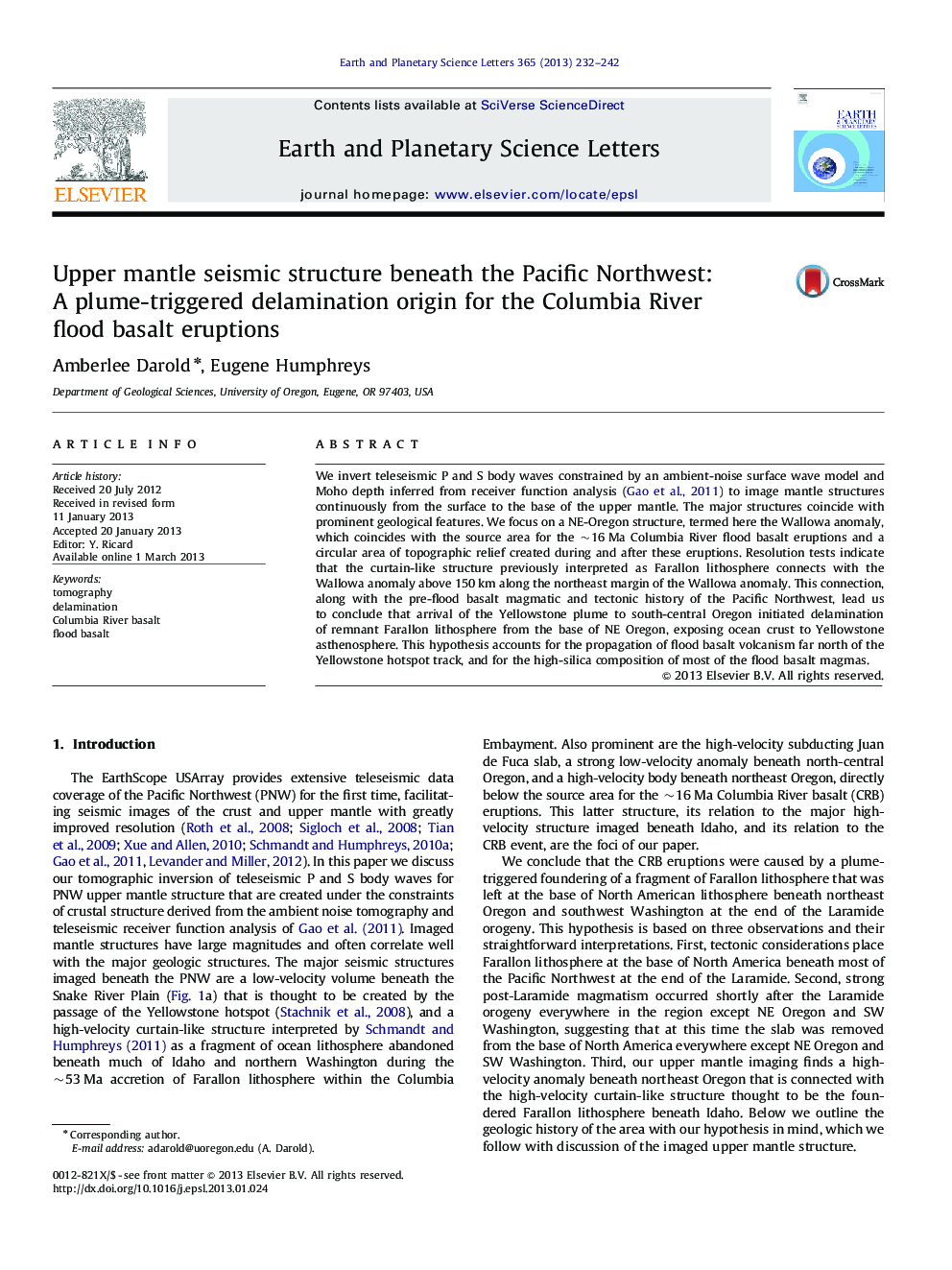| Article ID | Journal | Published Year | Pages | File Type |
|---|---|---|---|---|
| 4677144 | Earth and Planetary Science Letters | 2013 | 11 Pages |
We invert teleseismic P and S body waves constrained by an ambient-noise surface wave model and Moho depth inferred from receiver function analysis (Gao et al., 2011) to image mantle structures continuously from the surface to the base of the upper mantle. The major structures coincide with prominent geological features. We focus on a NE-Oregon structure, termed here the Wallowa anomaly, which coincides with the source area for the ∼16 Ma Columbia River flood basalt eruptions and a circular area of topographic relief created during and after these eruptions. Resolution tests indicate that the curtain-like structure previously interpreted as Farallon lithosphere connects with the Wallowa anomaly above 150 km along the northeast margin of the Wallowa anomaly. This connection, along with the pre-flood basalt magmatic and tectonic history of the Pacific Northwest, lead us to conclude that arrival of the Yellowstone plume to south-central Oregon initiated delamination of remnant Farallon lithosphere from the base of NE Oregon, exposing ocean crust to Yellowstone asthenosphere. This hypothesis accounts for the propagation of flood basalt volcanism far north of the Yellowstone hotspot track, and for the high-silica composition of most of the flood basalt magmas.
► We clearly image four major upper mantle structures in the Pacific Northwest. ► Imaged mantle structures have large magnitudes and correlate with major geologic structures. ► Imaging and resolution tests show the Wallowa structure is connected to the Farallon lithosphere. ► Columbia River basalts involve a plume-triggered delamination of remnant Farallon lithosphere.
